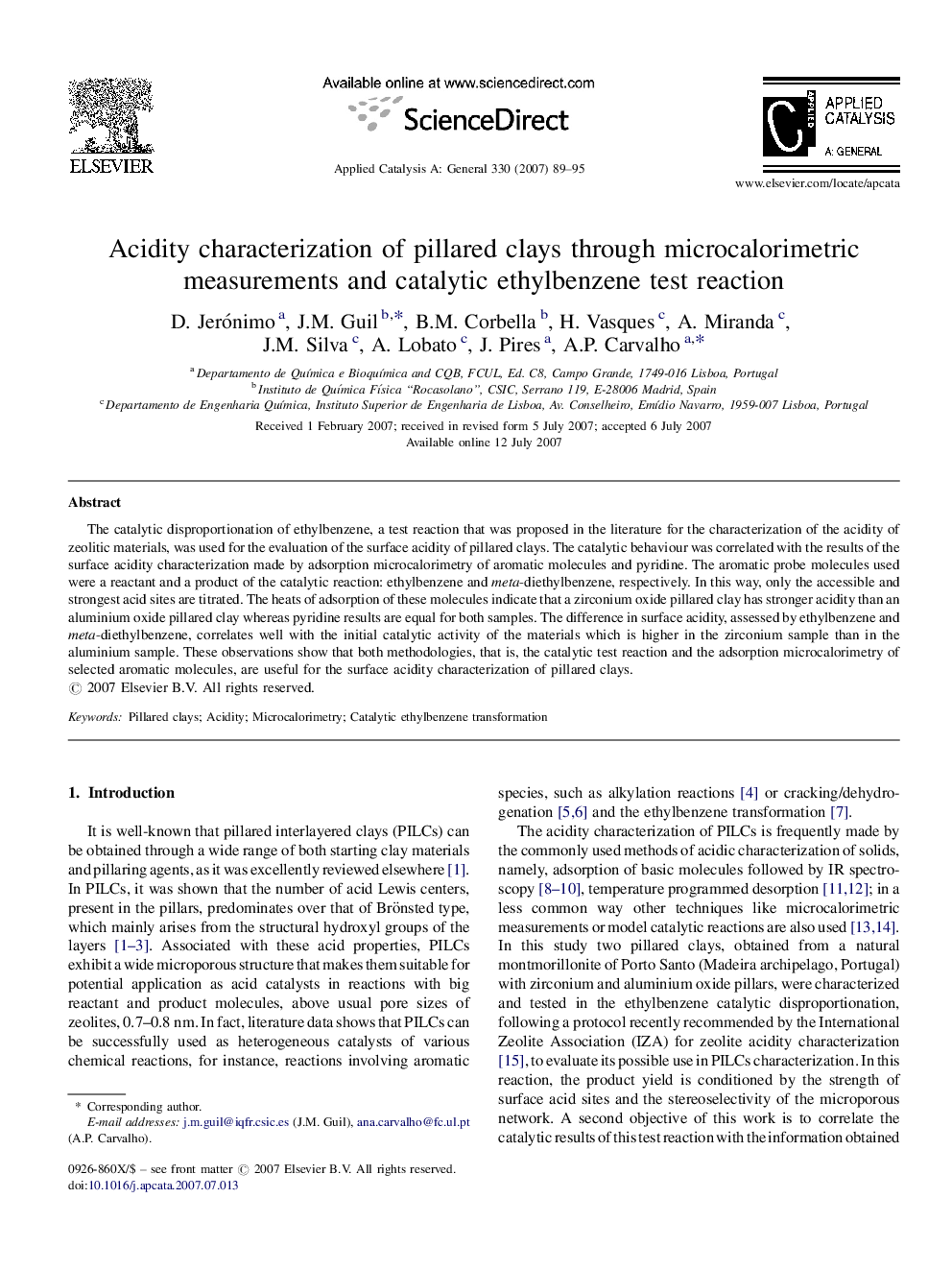| Article ID | Journal | Published Year | Pages | File Type |
|---|---|---|---|---|
| 43451 | Applied Catalysis A: General | 2007 | 7 Pages |
The catalytic disproportionation of ethylbenzene, a test reaction that was proposed in the literature for the characterization of the acidity of zeolitic materials, was used for the evaluation of the surface acidity of pillared clays. The catalytic behaviour was correlated with the results of the surface acidity characterization made by adsorption microcalorimetry of aromatic molecules and pyridine. The aromatic probe molecules used were a reactant and a product of the catalytic reaction: ethylbenzene and meta-diethylbenzene, respectively. In this way, only the accessible and strongest acid sites are titrated. The heats of adsorption of these molecules indicate that a zirconium oxide pillared clay has stronger acidity than an aluminium oxide pillared clay whereas pyridine results are equal for both samples. The difference in surface acidity, assessed by ethylbenzene and meta-diethylbenzene, correlates well with the initial catalytic activity of the materials which is higher in the zirconium sample than in the aluminium sample. These observations show that both methodologies, that is, the catalytic test reaction and the adsorption microcalorimetry of selected aromatic molecules, are useful for the surface acidity characterization of pillared clays.
Graphical abstractThe catalytic disproportionation of ethylbenzene as test reaction and adsorption microcalorimetry of a reactant and a product as probe molecules were used to characterize the surface acidity of two pillared clays: Al- and Zr-PILC. Both acidity and catalytic activity are higher for the zirconium sample. Figure optionsDownload full-size imageDownload as PowerPoint slide
